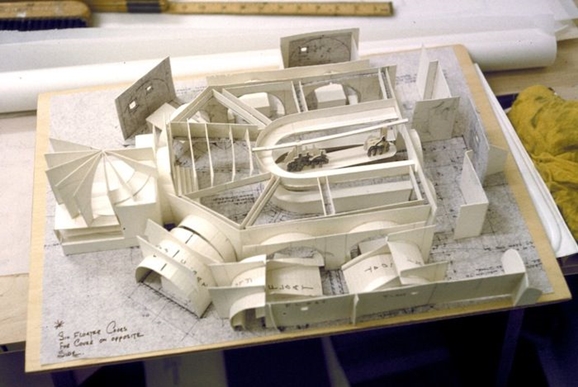Star Wars: Episode III – Revenge of the Sith (2005)
2D artwork created during 2002 and 2003

Traditional set model using paper and foam core boards
In the 1990s, there was generally a distinct divide between traditional 2D concept artists and computer 3D artists. I began using 3D for design work on Episode III in late 2002. This was the first time the Star Wars art department began incorporating digital 3D modeling for design work on the film series. Previously, concept artists used traditional and digital 2D methods, and made actual physical 3D models and maquettes. For Episode III, the art department employed the services of 3 traditional modelers.
I focused on creating fast and rough concepts, beginning with bridge views of the Separatist Cruiser from the opening sequence. Depicting a location or prop with drawings and paintings is obviously crucial, but by also creating a rough 3D version of an asset, designers can further resolve issues and hone in on proportions and spacial relationships. A 3D model can be quickly altered and viewed from any desired angle without having to laboriously redraw the scene by hand.
In the art department we typically used these models as an intermediate stage between a rough sketch or key painting, and a finished set design or film asset. Sometimes I made models of existing sketches to ensure the designs were fleshed out worked as intended before being sending them to ILM. On many occasions I took sketches from multiple artists of different parts of a set and blended them together to create a cohesive set layout. These layouts were then handed off to the animatics department, ILM's modeling department, and to the set builders to serve as a reference and starting point for further refinement.
Because these models were kept simple and typically untextured, we referred to them as "foam core models" in acknowledgement of the traditional models often built from paper and foam core boards. By keeping the presentation simple and straight forward, it makes it easier to focus on the overall design before materials, colors, and atmospheric effects are added.



















































































